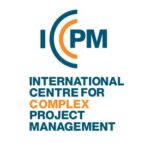Strategic Decision-Making
The Appleton Greene Corporate Training Program (CTP) for Strategic Decision-Making is provided by Mr. Albina Certified Learning Provider (CLP). Program Specifications: Monthly cost USD$2,500.00; Monthly Workshops 6 hours; Monthly Support 4 hours; Program Duration 12 months; Program orders subject to ongoing availability.

Personal Profile
Mr Albina is the Founder & Director of Quintessential Consulting Pty Ltd. He established Quintessential in 2013 to help business leaders make more informed, and effective decisions in the rapidly increasingly complex. He accomplishes this by creating resilient workforces and future-proofing their people to the increasing uncertainties of today’s complex environment, helping them to become more agile, adaptable, and less reliant on certainty.
With more than 30 years of experience in Government, Industry and Small to Medium Business, Mr Albina blends his working knowledge with the latest thinking in contemporary leadership and management methodologies. As an Executive Coach, Consultant and Corporate Educator, Mr Albina utilises Systems Thinking approaches to enable leaders, managers and team members to unlock their potential through a mind-set shift, which makes it possible to operate effectively in the grey space of decision-making. By disrupting conventional patterns of thinking, Mr Albina coaches his clients to see and act in different ways, revealing new possibilities that are otherwise unavailable in the status quo.
Mr Albina believes, “We need different ways to do things as the complexity of today’s workplace is becoming increasingly stressful, with managers struggling to keep up with the rate of change, rapidly evolving technology, the management of multiple stakeholders as well as ambiguous lines of accountability.“
Starting his career as an Aerospace Engineer, Mr Albina has worked internationally for some of the world’s leading Aerospace and Defence Industry organisations, including Airbus, Boeing, Defence Industry and the Royal Australian Air Force (RAAF). His considerable management knowledge, engineering expertise and cross-industry experience is much sought after and has seen him appointed to oversee strategic change, operational integration and reform for Defence, Government, Resources, Utilities, Telecommunications, Sports & Recreation and more recently, the development of First Nations ‘on-country’ initiatives involving environmental resilience, youth justice and business sustainability.
A graduate of the Australian Defence Force Academy, Mr Albina completed his undergraduate degree at the University of Sydney in 1993 where he was awarded a Bachelor Engineering majoring in Aeronautical Engineering. He has since gone on to further studies including a Masters Degree in Aerospace from the University of New South Wales in 1999; a Graduate Diploma in Test & Evaluation from the University of South Australia in 2003; and an Executive MBA in Complexity Leadership & Management from Queensland University of Technology in 2013.
He is a Sessional Academic and an Executive Coach for the Queensland University of Technology’s Graduate School of Business and Chairman of the Board for an NDIS organisation in Brisbane.
To request further information about Mr. Albina through Appleton Greene, please Click Here.
(CLP) Programs
Appleton Greene corporate training programs are all process-driven. They are used as vehicles to implement tangible business processes within clients’ organizations, together with training, support and facilitation during the use of these processes. Corporate training programs are therefore implemented over a sustainable period of time, that is to say, between 1 year (incorporating 12 monthly workshops), and 4 years (incorporating 48 monthly workshops). Your program information guide will specify how long each program takes to complete. Each monthly workshop takes 6 hours to implement and can be undertaken either on the client’s premises, an Appleton Greene serviced office, or online via the internet. This enables clients to implement each part of their business process, before moving onto the next stage of the program and enables employees to plan their study time around their current work commitments. The result is far greater program benefit, over a more sustainable period of time and a significantly improved return on investment.
Appleton Greene uses standard and bespoke corporate training programs as vessels to transfer business process improvement knowledge into the heart of our clients’ organizations. Each individual program focuses upon the implementation of a specific business process, which enables clients to easily quantify their return on investment. There are hundreds of established Appleton Greene corporate training products now available to clients within customer services, e-business, finance, globalization, human resources, information technology, legal, management, marketing and production. It does not matter whether a client’s employees are located within one office, or an unlimited number of international offices, we can still bring them together to learn and implement specific business processes collectively. Our approach to global localization enables us to provide clients with a truly international service with that all important personal touch. Appleton Greene corporate training programs can be provided virtually or locally and they are all unique in that they individually focus upon a specific business function. All (CLP) programs are implemented over a sustainable period of time, usually between 1-4 years, incorporating 12-48 monthly workshops and professional support is consistently provided during this time by qualified learning providers and where appropriate, by Accredited Consultants.
Executive summary
Strategic Decision-Making
History
The very nature of how we have made decisions in the past and what we have measured to assess performance and productivity has almost always been biased towards a retrospective view of past events. We seek information from a series of actions or events that have already occurred, and we use these to assess the effectiveness, success or otherwise of past strategies, approaches, and actions to inform us about future direction.
There is an inherent level of confidence with this approach as it offers us comfort to know that we are utilising and applying hard data, facts and figures that are measurable, known and established. It leads us to believe that our decision making is based on high levels of certainty, with predictable outcomes and lower levels of risk tolerance for factors that may unhinge our plans. The inertia with this type of thinking is strong, and it is very difficult to change given that it is indoctrinated in our business systems and corporate level of risk aversion, i.e., the way we measure performance, what we value, how we determine productivity and our desire to avoid making mistakes. In fact, “…the way that things have always been done” is a well-known colloquial expression often used to describe traditional or conventional practices, methods, or procedures. It signifies a reluctance to change or innovate in favour of maintaining the status quo, i.e., existing, established routines.
Related to this aversion are some key phrases that are common in today’s workplace:
Resistance to Change: Resistance to altering existing processes, even when those processes may no longer be the most effective or efficient, which can stem from a fear of the unknown, a reluctance to challenge the status quo, or a preference for familiar routines.
Institutional Inertia: It is frequently used in the context of organisations and institutions, where long-standing practices may persist despite being outdated or counterproductive. This inertia can be a barrier to progress and adaptability.
Cultural and Social Norms: An application to cultural or societal norms and traditions, reflecting a desire to maintain traditional values and practices.
Risk Aversion: People or organisations that adhere to established ways of doing things may do so out of a risk-averse mentality. Change is often accompanied by uncertainty, and individuals or entities may be hesitant to take on that uncertainty.
Innovation and Improvement: Challenging the status quo and being open to change is essential for progress and innovation. When organisations or individuals cling too tightly to tradition, it can hinder opportunities for improvement and growth.
Balancing Tradition and Innovation: While it’s important to respect and learn from established practices, it’s equally important to remain open to new ideas and adapt to changing circumstances. Striking a balance between tradition and innovation is a common challenge in various domains.
There can be valid reasons for maintaining certain practices due to their effectiveness or relevance. It’s not always the case that “the way things have always been done” should be discarded without careful consideration.
Our aversion to these sources of uncertainty and the discomfort with ambiguity has a neurological foundation based on our survival instinct to ‘belong’ to a group through consensus and the avoidance of being an outlier. It is a psychological phenomenon related to an individual’s cognitive and emotional response to situations characterised by unpredictability, complexity, or a lack of clear information. While this concept is primarily psychological, its impact is very relevant to the way we make sense of our situation and the resulting decisions that we make in a business environment.
The basis of the predominant or standard approaches to management is grounded in scientific models of the Newtonian era (late 1600s to early 1700s) where the world is deterministic and understood by reductionism. This is a belief that there are independent elements or building blocks of any system such that we can completely understand the system by breaking it down into its smallest elements and describing how these interact. This allows us to control and predict outcomes in an orderly manner based on the laws present. Laplace, the great mathematician of the late 1700s, postulated that no behaviour would be unpredictable if we could know all the underlying equations. This logic and thinking lead managers to seek more and more data to make sense of the situation.
More and more, the world does not operate in this deterministic way anymore, and we are unable to rely on reductionism to reliably make decisions. A shift in our thinking is required if we are to successfully navigate the complexity of the modern world that we live and work in.

Current Position
The pace of change in today’s world is not only rapidly increasing, but also becoming more complex than ever before. As the environment becomes increasingly turbulent and unpredictable, organisations need to find different ways of coping with new challenges, given that many existing methods were not designed to deal with complex problems. The perceived complexity of a situation or system is relative to the capacity of the organisation to comprehend it. Over the past decade complexity has become an issue that is increasingly felt and discussed within organisations in terms of the challenges people face. In fact, many executives have recognised complexity as the top challenge that they were facing, especially the impacts that is has on their ability to make effective decisions.
Technological geo-political, environmental, ethical, and societal impacts and ways of doing business on a global scale all contribute to the accelerating rate of change and associated complexity that managers face in their day to day working life. Once it was only managers and leaders working on very large projects and programs with multiple stakeholders who experienced complexity. Increasingly however, people working in smaller organisations also experience complexity due to the degree of changes and issues that impact their working environment outside of their own organisation. This includes the boundary of the organisation and what happens to it is not restricted to the physical walls. The study and application of complexity-based approaches are valuable and applicable to a diverse range of organisational situations, regardless of whether they are large or small. Our awareness of and ability to apply complexity-based thinking and models allows us to see and navigate the patterns that are present in the complexity, we just must learn to attune our senses to it. The way we approach complexity using tools and methodologies called complexity approaches, require us to work and be comfortable operating in inter-disciplinary fields which will contribute to our understanding and ability to manage complexity.
Complexity has a significant impact on the decision-making process, particularly in today’s rapidly changing and interconnected world, and these are some of the hallmarks of that today’s leaders and managers must navigate:
Multiple Variables: Complex situations often involve numerous variables, some of which may be interrelated. Decision makers must consider a wide range of factors and their potential interactions.
Uncertainty: Complexity is often associated with uncertainty, making it challenging to predict outcomes with certainty. Decision makers must contend with incomplete information and potential risks.
Non-Linear / Indirect Relationships: Complex systems frequently exhibit non-linear relationships, where small changes in one variable can lead to disproportionate effects elsewhere. This necessitates a deeper understanding of causality.
Interconnectedness: In complex systems, various elements are interconnected. Decisions made in one area can have ripple effects throughout the system, necessitating a holistic perspective.
Emergent Properties: Complex systems often exhibit emergent properties—characteristics or behaviours that emerge from the interactions of individual components. Decision makers must be aware of these emergent properties and their implications.
Cognitive Overload: Dealing with complexity can lead to cognitive overload. Decision makers may struggle to process and make sense of vast amounts of information.
Paradoxes and Trade-offs: Complex situations may involve paradoxes or trade-offs. Decision makers may have to navigate conflicting objectives or make tough choices where one positive outcome comes at the expense of another.
Adaptive Decision-Making: In complex environments, rigid or one-size-fits-all decision-making approaches may be ineffective. Decision makers often need to be adaptive, willing to adjust their strategies as new information becomes available.
Multiple Stakeholders: Complex decisions often involve multiple stakeholders with different interests and perspectives. Balancing these diverse viewpoints is a critical aspect of the decision-making process.
Systems Thinking: Systems thinking, which focuses on the interconnectedness of elements within a system, is often a valuable approach in complex decision making. It helps decision makers consider the bigger picture.
Scenario Planning: Decision makers may use scenario planning as a tool to anticipate various potential outcomes and prepare for them. This approach helps mitigate the impact of uncertainty.
Data and Technology: Advanced data analytics and technology, such as machine learning and artificial intelligence, can assist in processing and extracting insights from complex data, aiding decision makers.
Learning from Failure: In complex environments, some decisions may not yield the desired results. Decision makers need to embrace a learning-oriented approach and be open to revising their strategies based on feedback and outcomes.
New approaches are required to help us adopt new perspectives on observing and expressing that the world is complex. It brings into question the notion that we can predict and control outcomes when it comes to strategy, leadership, and change. A shift is required to upskill business leaders and managers should they wish to better navigate and deal with growing levels of complexity in the future. Importantly, the idea that we are in full control must be challenged and the way we make decisions needs to change. It may be very difficult for many of us to accept the shift from ‘control’ to ‘influence’.

Future Outlook
If business leaders and managers wish to make more effective decision making in complex situations, it will require them to adopt a combination of analytical thinking, creativity, adaptability, and the ability to collaborate with others. It is crucial for decision makers to acknowledge and appreciate the complexity of their environments and to develop strategies that allow them to navigate it effectively.
To navigate the complexity of our environment, there are number of fundamental elements of complex systems that need to be understood, including:
• Emergence and self-organisation
• Uncertainty – limits to predictability
• Interconnectedness, interdependencies, and formation of networks
• Non-linearity
• Diversity
• Order and disorder
A complex system has these elements and exhibits characteristics of emergence, order and disorder, self-organisation, uncertainty, unpredictability, instability, adaptation, phase transition to name a few. A critical capability in working in complexity is in the recognition and adoption of adaptive approaches. A common experience is that once these principles have been learnt you will be able to see the world around you and your experience in organisations in new ways.
To fully understand the systems that we operate within we need to be able to identify the different challenges of simple, complicated, complex, and chaotic systems. In learning about the characteristics of these systems we can see and understand existing patterns more effectively. How we recognise systems and what is seen in a system is based on individual perspectives, experiences, and the way we each process information and gain knowledge.
A system can be defined as a set of things working together as parts of a mechanism or an interconnecting network (that is a whole) like a transportation system or the education system; and a system can also be defined as a set of principles or procedures according to which something is done.
There is a cognitive limit to the amount of information we can handle and seeking more to find, cannot be achieved; therefore the predictable and controlled future remains elusive and will continue to impact key managerial activities such as forecasting and planning, mitigating risk and decision making. Management has been greatly influenced by reductionism from the early days of its development. This program will introduce participants to the notion of complexity, and how to navigate it by:
• Appreciating the characteristics of complexity and how to identify it
• Understanding and identifying the different types of complexity
• Understanding how complexity relates to the organisational context
• Distinguishing when to apply complexity management competencies to organisational situations
• Identifying sources of complexity and identifying strategies on how to manage them successfully
• Identifying the key skills needed for management of organisational complexity
• Designing various interventions and applying practical approaches to treating complex situations
Curriculum
Strategic Decision-Making – Part 1- Year 1
- Part 1 Month 1 Shifting our Thinking
- Part 1 Month 2 The Characteristics of Complexity
- Part 1 Month 3 Understanding Context
- Part 1 Month 4 Strategic Decision-Making in the Project Environment
- Part 1 Month 5 Systems Thinking
- Part 1 Month 6 Symptoms & Root Causes
- Part 1 Month 7 Leverage Points for Change
- Part 1 Month 8 Understanding Patterns
- Part 1 Month 9 The Grey Space of Decision Making
- Part 1 Month 10 Adapting your Leadership Style
- Part 1 Month 11 Emergent Strategy
- Part 1 Month 12 Action Planning
Program Objectives
The following list represents the Key Program Objectives (KPO) for the Appleton Greene Strategic Decision-Making corporate training program.
Strategic Decision-Making – Part 1- Year 1
- Part 1 Month 1 Shifting our Thinking – The world we live and work in has become increasingly complex and uncertain. The pace of change continues to escalate, and we face more disruptive events, behaviours and trends than ever before. We require different thinking and different approaches, and we need to uplift our ability to deal with emergent and unpredictable challenges ahead. This workshop will introduce participants to the concepts of complexity, and Systems Thinking. Embracing these principles will enhance the leader’s and managers ability to navigate the known and unknown challenges ahead, helping them to make more effective decisions.
- Part 1 Month 2 The Characteristics of Complexity – Complexity can be increasingly found in various systems and phenomena, and it exhibits several key characteristics that if identified and better understood, it offers the opportunity for leaders and managers to better navigate the challenges ahead. The origins of complexity is in biology, ecology, and evolution as a development of chaos theory. It is the theory that random events, if left to happen without interference, will settle into a pattern. In common parlance, complexity is often used to mean “difficult” or “convoluted”, that is, a problem where the answer is not obvious, which are sometimes referred to as ‘Wicked Problems’. You will learn the characteristics of complex systems and to better understand how to work with wicked problems, and importantly how to develop appropriate responses to avoid unintended consequences.
- Part 1 Month 3 Understanding Context – A key principle in the skill to think strategically is the ability to identify and understand context so that it is considered at the same time as the problem itself. We are often adept at solving problems in isolation, however the ability to link problem and context is critical in effective problem solving. In this workshop you will learn how to unpack the characteristics of the problem situation, and to determine how to adapt your problem solving skills to best suit the situation at hand. The workshop will review some practical frameworks that will enable you to appreciate the context of the problem situation, and develop approaches that are best suited to the situation.
- Part 1 Month 4 Strategic Decision-Making in the Project Environment – As a follow on to the previous workshop, we delve deeper into unpacking the types of complexity found in project environments. In order to make more effective decisions, we first have to understand the context of our situation and the dimensions of complexity. This workshop introduces several methodologies that helps leaders and managers unpack their project environment, enabling them to devise more appropriate and more effective responses to their environment. By doing this, they offer themselves a greater chance of personal and project success.
- Part 1 Month 5 Systems Thinking – In this world, we are surrounded by systems, in fact we live in a world where there are systems of systems. The products, processes, and projects that we work on are increasingly complex and are interrelated forms of systems where small changes on one part of the system can affect all other parts. Systems Thinking is the process of understanding how entities influence one another within a whole. It helps organisations, leaders and managers examine complexity and simplify it; recognising patterns, and creating new and novel interventions to challenges. Understanding and approaching problems from a systems perspective is an essential skill as we try to navigate this complex world. In this workshop you will learn how to make sense of, and communicate these systems behaviours. In the process, you will gain new insights and learn how to apply new methods, techniques, and vocabulary to your projects and processes.
- Part 1 Month 6 Symptoms & Root Causes – A system can be any group of interacting parts that form a whole, such as an organisation, a community, or an ecosystem. Systems thinking helps you see beyond the obvious events and patterns to the underlying structures and mental models that shape them. The iceberg model is a popular tool for systems thinking, a skill that helps you understand the complex and dynamic relationships among the elements of a system. In this workshop, you will learn what the iceberg model is, how it can benefit your systems thinking, and what are some of its limitations. It can help you avoid making hasty assumptions or blaming individuals, instead looking for deeper causes and systemic factors. Additionally, it can assist in identifying leverage points and opportunities for change by focusing on the structures and mental models that drive the system. Furthermore, it can be used to challenge your own assumptions and biases, as well as explore different perspectives and scenarios by surfacing your mental models and those of others, and creates a common language and framework to communicate more effectively and collaboratively with others when describing the system and its dynamics.
- Part 1 Month 7 Leverage Points for Change – Leverage points are places within a complex system where a small shift in one thing can produce big changes in everything. This idea is not unique to systems thinking and it is embedded in stories, legend and folklore, i.e., the silver bullet, the trimtab, the miracle cure, the secret passage, the magic password, the single hero who turns the tide of history. The nearly effortless way to cut through or leap over huge obstacles. We not only want to believe that there are leverage points, we want to know where they are and how to get our hands on them. Leverage points are points of power; a place in a system’s structure where a solution element can be applied. It’s a low leverage point if a small amount of change force causes a small change in system behaviour. It’s a high leverage point if a small amount of change force causes a large change in system behaviour. In this workshop, you will learn about leverage points, how to identify them and utilise them to affect systemic change.
- Part 1 Month 8 Understanding Patterns – Sometimes it is easy to fall into the paralysis trap when it comes to problem analysis. It can be hard to venture away from those same time-tested analytical tools such as process maps, failure modes & effects analysis, cause-and-effect matrix, and fishbone diagrams, etc, especially when they feel comfortable and are relatively easy to use. This workshop will introduce you to causal loop maps and its ability to identify and visually display intricate processes, cyclic patterns, and identify root causes. By using causal loop maps to create stories about complex issues, we can make our understanding of the interrelationships within a system’s structure more explicit. The resulting diagrams also provide a visual representation that can be used to communicate that understanding with others. The leader and manager no longer needs to focus only on one interaction between two variables, but can focus on the entire system, along with its many variables and its many causes and effects, leading to more effective strategic decisions made at a more holistic level.
- Part 1 Month 9 The Grey Space of Decision Making – Our complex world can rarely be viewed through a lens of black/white, yes/no, right/wrong etc., as there are numerous dependencies, perspectives, and conditions that we must consider in situations that present as paradoxes, dilemmas, and conundrums etc. Our world today needs to apply ‘grey-scale’ thinking, avoiding the extremes of polarities and applying the use of “both-and” thinking as a supplement to the traditional “either-or” problem solving. Instead of viewing situations as either/or choices, polarity thinking acknowledges that certain issues are interconnected and require a balanced approach. They are interdependent pairs that need each other over time to maintain and gain performance. Since polarities are unavoidable, they are present in every individual, team, organisation and business. In this workshop, you will learn about grey-scale thinking through the practical application Polarity Mapping, offering leaders and managers the opportunity to develop more balanced, sustainable and resilience strategic decisions.
- Part 1 Month 10 Adapting your Leadership Style – Whilst there is an abundance of leadership literature, many of these theories are based on traditional and authoritative approaches from Industrial era thinking. The complex modern world requires a contemporary approach. Complex adaptive leadership (CAL) is an approach to leadership based on a concept called “leadership of the many by the many”, rather than based on an oligarchic assumption (leadership of the many by the few). Leadership in this theory is seen as a complex dynamic involving all, rather than only a role or attribute within a hierarchy. CAL offers the skills, attributes and roles which are additional to the demands of traditional leadership. In this workshop, you will learn about the characteristics and behaviours associated with CAL, and how the modern leader can evolve and elevate their strategic leadership skills.
- Part 1 Month 11 Emergent Strategy – Intentional Change Theory (ICT) is an iterative model of change and adaption that focuses on understanding and facilitating sustainable, desired change in individuals and organisations. It creates emergence through five stages: (1) discovering the ideal self, (2) exploring the real self, (3) developing a learning agenda, (4) experimenting with new behaviors, thoughts, and feelings, and (5) practicing these new behaviors to integrate them into one’s identity. By applying this model, you will learn how to leverage its key concepts of positive emotional attractors (PEAs) and negative emotional attractors (NEAs), which represent the emotional states that either facilitate or hinder change. PEAs, such as hope, optimism, and compassion, are essential for driving intentional change, while NEAs, like fear, stress, and anxiety, can impede the change process. This approach is effective in complex problem situations as it enables numerous iterative adjustments to be made in preference to whole-scale change.
- Part 1 Month 12 Action Planning – In this workshop, you will learn about action planning by utilising the Horizons Model. It is a strategic framework used to analyse and plan for the future by understanding the different phases of innovation and change within an organisation or a system, providing a structured way to think about current activities, future possibilities, and the transition between them. Each horizon represents a different time frame and focus, and it offers a valuable tool for strategic thinking and decision-making, guiding organisations to effectively manage the present while preparing for the opportunities and uncertainties of the future.
Methodology
Strategic Decision-Making
Program Planning
The ability to identify and work with complexity is inherently different for everyone. Some of us may be pre-disposed to an ability to make sense of abstract concepts, where we naturally see patterns and trends, and can unpack the situation to identify the systemic causes for the way things are. Others may be strong in analytics, where they excel with details and can reduce a problem situation down to its constituent parts to solve the issues at hand.
Regardless of approach, our ability to makes sense of situation and take the necessary course of action depends on a concept called cognitive fitness. Cognitive fitness refers to the overall health and function of the brain and its ability to perform mental tasks effectively and efficiently. It encompasses a range of cognitive abilities, including memory, attention, problem-solving, decision-making, creativity, and learning. Cognitive fitness is essential for everyday tasks and activities, and it plays a crucial role in maintaining a high quality of life, both in terms of physical and mental well-being, and greatly influences the quality of the decisions that we make. Just as physical fitness involves exercise and a healthy lifestyle to maintain bodily health, cognitive fitness often involves activities, practices, and lifestyle choices that support and enhance cognitive abilities and mental acuity by having the range of responses appropriate to the situation at hand.
The first part of this program seeks to build your cognitive fitness by introducing you to concepts of complexity, which will help you to define the problem situation more effectively by:
• Understanding the characteristics of complexity
• Identifying situations that are complex, and those that are not
• Identifying different types of complexity
Importantly, it will expand your leadership and management repertoire and prompt you to stop, think and take a course of action that is most suitable to the context of the situation. We will do this by applying exploring different dimensions associated with the level of:
• Identifiability of a complex problem situation
• Stakeholder alignment in a complex problem situation
• Knowability to attain a solution in a complex problem situation

Program Development
The second part of the program will delve deeper into the nature and types of complexity to help decision maker better understand the problem situation and the best way to deal with it. It involves diagnosis to understand the complexity within a particular system, organisation, project, or situation. It will highlight the various elements and factors that contribute to the complexity of the system and how they interact. This will help to gain insights into the nature and sources of complexity so that appropriate strategies and solutions can be developed to address it effectively.
Key steps involved in a complexity diagnosis will include perspective taking from tangible and intangible aspects, i.e., those ‘hard system’ factors that are easily recognisable and explicitly definable, and those ‘soft system’ factors that are inherent, implied and/or inferred. The following process will be applied:
1. Identifying the different types of complexity by recognising the different elements or aspects that contribute to complexity. These factors can vary depending on the context but may include organisational structures, processes, regulations, technologies, interdependencies, and more.
2. Quantifying the level of complexity by developing various metrics and measurements, such as the number of interacting components or the difficulty of managing a particular system.
3. Visualising complexity by conveying the information associated with the problem situation through the richness of story-telling and engaging the audience in a manner that goes much deeper than facts and figures, and create visual representations of the system. These visual models can help you understand how different components are interconnected and how they influence each other.
By diagnosing and sharing a common language and understanding around complexity, organisations and individuals can make more informed decisions and implement effective strategies to navigate the situation more successfully.

Program Implementation
The final phase of the program involves the formulation of interventions as a holistic approach to problem-solving and decision-making. Applying a systems methodology will ensure that complexity is appropriately treated, specifically the interconnections and relationships among various elements within a system.
Here are steps and strategies that we will cover to help implement a systems thinking approach to the complex problem situation:
1. Assessing Causes & Consequences by examining the root causes of complexity and its potential consequences by appreciating its historical development and predicting how it might affect future outcomes.
2. Impact Analysis by understanding how complexity affects performance, decision-making, and overall system functioning, and how stakeholders are affected, particularly those who are marginalised.
3. Identify Leverage Points by determining where in the system that changes can be made to have the most significant impact on system outcomes.
4. Solution Development appreciation based on the diagnosis, strategies and solutions that can be developed to manage or reduce complexity. These may include simplification, process reengineering, technology upgrades, or changes in organisational/functional structure.
5. Scenario Testing by using models to test different scenarios and interventions. We will explore how changes to specific elements or policies might influence system behaviour and outcomes.
All these activities need to be underpinned by effective communication and collaboration amongst the stakeholder community who have an interest in the problem situation. We will explore how to involve relevant stakeholders, share insights from your systems thinking analysis, and work together to implement and monitor changes. Undertaking these steps as a community and embracing the range of perspectives will facilitate a shift in mindset and a commitment to viewing problems and challenges in a more holistic way. It will lead to more effective solutions and a deeper understanding of complex issues.
Industries
This service is primarily available to the following industry sectors:
Aerospace
Aerospace is a dynamic and rapidly-evolving industry that continuously experiences new trends and developments. The sector is subject to many external pressures and its need to constantly change and adapt to a variety of factors is relentless. Conversely, Aerospace is also subject to a wide range of regulatory, legal and safety requirements, many of which are mandatory and inflexible. Therefore, the need to balance the two, seemingly opposing forces, represents a significant challenge for leaders and managers alike.
Aerospace is currently facing and will continue to face numerous challenges that is disrupting the sector and making the ability to plan a very complex task. All these factors interrelate, and one piece does not move without affecting all other. Leaders and managers will need to accept and embrace this complex web of disruptors if they navigate a successful future.
Some of the driving forces of change that are changing the face of aerospace include:
• Electric and Hybrid Propulsion: There is a growing social and environment pressure for greater adoption of electric and hybrid-electric propulsion systems due to their potential to reduce emissions and increase fuel efficiency in both commercial and military aircraft.
• Sustainable Aviation: Sustainability has become a major concern in aerospace. Aircraft manufacturers and airlines are exploring ways to reduce their environmental footprint by developing more fuel-efficient planes, alternative fuels, and exploring novel technologies like hydrogen-powered aircraft.
• Additive Manufacturing (3D Printing): 3D printing technology is being increasingly used in aerospace for prototyping, producing complex components, and even creating entire aircraft structures. This trend can lead to reduced costs and increased design flexibility.
• Autonomous and Unmanned Aircraft: The development and integration of autonomous and uncrewed aircraft, including drones, into the aerospace industry are ongoing. These aircraft have rapidly growing applications in surveillance, cargo transport, and passenger air taxis.
• Space Exploration: The space industry continues to experience significant growth and innovation. Private companies like SpaceX, Blue Origin, and others are driving new developments in launch technology and commercial space travel. There is also an increased focus on lunar and Martian exploration.
• Satellite Technology: The demand for small satellites, including CubeSats and nanosatellites, is on the rise for purposes such as Earth observation, communication, and scientific research. Mega-constellations of satellites are being deployed to improve global connectivity.
• Hypersonic Flight: Hypersonic flight, defined as speeds greater than Mach 5, is a field of significant research and development. Hypersonic aircraft and missiles have the potential to revolutionize military and commercial aerospace.
• Advanced Materials: The aerospace industry is continually exploring advanced materials, such as carbon composites, to reduce weight and increase fuel efficiency in aircraft. These materials also enhance durability and reduce maintenance costs.
Defence
Defence, like the aerospace sector, experiences various trends and developments as it adapts to evolving security challenges and technological advancements. Often accompanied by public oversight and scrutiny, Governments and Defence Industry around the world strive to continually enhance operational readiness and ensure their strategic capabilities are maintained and are, in fact, ahead of the game given this new technology and the associated geo-political security environment. Navigating this sector requires a complex mix of numerous factors that extend far beyond military considerations, therefore today’s Defence leader and/or manager must be multi-skilled across a range of holistic considerations, ranging from technology, legal, ethical, political, and societal.
Defence forces around the world are having to deal with evolving and novel challenges, threats, and operational needs that are influenced by geopolitical shifts, technological advancements, and changes in the global security landscape. Some of the emerging factors include:
1. Modernisation: Many countries are investing in the modernisation of their military forces, including updating equipment, vehicles, and weapons systems.
2. Cybersecurity and Information Warfare: The increasing reliance on digital infrastructure has made cybersecurity and information warfare a top priority, and it represents the new face of warfare. Defence forces are focusing on protecting critical data, infrastructure, and networks from cyberattacks and developing offensive capabilities in the cyber domain.
3. Uncrewed Systems: The use of uncrewed aerial vehicles (UAVs), uncrewed ground vehicles (UGVs), and uncrewed underwater vehicles (UUVs) is growing. These systems are used for surveillance, reconnaissance, and combat operations. As they reduce human exposure to danger, new modes of military engagement is possible, creating a new face of warfare.
4. AI and Machine Learning: Artificial intelligence (AI) and machine learning technologies are being applied in defence for a variety of purposes, including autonomous systems, data analysis, and decision support. These technologies can enhance situational awareness and improve the efficiency of military operations.
5. Hypersonic Weapons: Hypersonic missiles and vehicles, which travel at speeds greater than Mach 5, have gained attention due to their potential to overcome existing missile defence systems and their military applications.
6. Space Forces: As space becomes more militarised, countries are developing capabilities to protect their space assets and to deny adversaries the use of space for navigation, communication, and surveillance.
7. Defence against Emerging Threats: The defence industry is focusing on countering emerging threats, including bioterrorism, hypersonic missiles, and disruptive technologies like quantum computing.
8. Global Supply Chain Security: Ensuring the security of defence supply chains is a growing concern. Countries are working to reduce dependencies on foreign suppliers, especially for critical defence components.
9. Human-Machine Interface: The integration of human operators with machines, including AI and autonomous systems, is becoming more prevalent. This approach can enhance decision-making and the effectiveness of military operations.
10. Counterterrorism and Asymmetric Warfare: Defence forces continue to address the threat of terrorism and asymmetric warfare, often requiring unconventional strategies and tactics.
Education
The field of education is continually evolving to meet the changing needs of new and current learners, advancements in technology, and shifts in societal values and expectations. The pace of change has driven the need to continually upskill to remain current and relevant. In some cases, we are preparing ourselves for jobs that do not yet exist. This is a significant challenge in a rapidly changing world driven by technological advancements and evolving societal needs. To equip individuals for these future roles, education and learning needs to be blended with societal expectations. Not only does the learning content need to adapt, but also the mode of deliver such that learning is continuous and supports the development of a broad set of skills and attributes that can be applied across a variety of career paths.
Current and future trends in education and learning delivery includes:
1. Online and Blended Learning: The COVID-19 pandemic accelerated the adoption of online and blended learning. Many educational institutions integrated technology into their curricula, offering a mix of in-person and online instruction. This trend has continued to shape the educational landscape.
2. Personalised Learning: Personalised learning approaches such as Individual Education Plans, which cater to individual students’ needs and interests, have gained prominence to deal with the diverse way that we absorb information. Adaptive learning software and data analytics help tailor instruction to students’ abilities and learning styles.
3. Remote and Hybrid Learning: Even before the pandemic, remote and hybrid learning were growing trends. These modes of education allow for flexibility and are particularly useful for adult learners, remote communities, and continuing education.
4. EdTech Integration: The use of educational technology (EdTech) tools and platforms has become more prevalent. These tools include virtual reality, augmented reality, and artificial intelligence, which can enhance engagement and improve learning outcomes.
5. Competency-Based Education: Competency-based education focuses on demonstrating mastery of specific skills or competencies rather than traditional grade levels. This approach is gaining traction, especially in vocational and higher education.
6. Microlearning: Microlearning involves short, focused learning modules that can be completed quickly. It caters to the modern preference for short bursts of learning and is often delivered through mobile devices.
7. Gamification and Play-Based Learning: Gamification techniques and educational games are being used to make learning more engaging and interactive, particularly for younger learners.
8. Social and Emotional Learning (SEL) : There’s a growing emphasis on teaching social and emotional skills alongside academic content to help students better navigate life’s challenges.
9. Inclusivity and Diversity: Inclusion and diversity are important trends in education. Schools and universities are working to create more inclusive environments for students of all backgrounds and abilities.
10. STEM Education: Science, Technology, Engineering, and Mathematics (STEM) education remains a priority, with a focus on encouraging more students, especially underrepresented groups, to pursue STEM-related careers.
11. Sustainability and Environmental Education: There’s an increasing emphasis on educating students about sustainability, environmental conservation, and climate change.
12. Global Education and Cultural Competence: Globalisation has led to a growing interest in global education and cultural competence. Schools are incorporating international perspectives and language learning into their curricula.
13. Professional Development for Educators: Ongoing professional development for teachers and educators is essential, especially as new teaching methods and technologies emerge.
14. Assessment Reform: There’s a shift toward more authentic and formative assessment methods that focus on demonstrating understanding and problem-solving skills rather than just rote memorization.
15. Open Educational Resources (OER) : The use of open educational resources, which are freely available and adaptable teaching materials, continues to grow, making education more affordable and accessible.
16. Education Policy Reforms: Governments worldwide are re-evaluating education policies to address the challenges and opportunities presented by changing demographics, technological advancements, and economic shifts.
Staying updated on the latest trends and innovations in the education sector is essential for educators, administrators, and policymakers. This requires the ability to project forward to anticipate emergent needs, and delivering greater levels of content that facilitates an ability to ‘learn how to learn’.
Government
Governments and government organisations alike consistently face numerous new and complex challenges with policy making, public and administration their day-to-day operations. Complexity can arise from diverse range of sources, such as evolving policies, technology, societal needs, and global interdependencies. Moreover, political, social, and economic factors play a significant role in shaping the government’s agenda and policy initiatives. Dealing with these types of complexity requires governments to adopt flexible and adaptive strategies involving cross-agency collaboration, engaging with Industry, investing in data and technology infrastructure, engaging with community stakeholders, and maintaining a strong focus on efficiency and effectiveness in their operations.
Governments need to anticipate and prepare for emerging complexities in an ever-changing world, particularly as they experience a wide variety of trends and changes in response to evolving societal, technological, and political landscapes. These are some of the emerging patterns and trends that governments need to consider:
1. Digital Transformation: Embracing digital technologies to improve service delivery, enhance public engagement, and increase operational efficiency.
2. Open Data and Transparency: Open data initiatives to make government data accessible to the public for transparency and accountability. This trend aims to empower citizens, researchers, and businesses to leverage government data for various purposes.
3. Cybersecurity: As we all rely more on digital systems and data, the need for robust cybersecurity measures has grown. Governments are working to protect sensitive information and critical infrastructure from cyber threats.
4. Artificial Intelligence (AI) and Automation: Governments are exploring the use of AI and automation to enhance various aspects of governance, including administrative processes, decision-making, and citizen services.
5. E-Governance and Online Services: The availability of online government services has become a necessity. Citizens can access a wide range of government services, from tax filing to applying for permits, online.
6. Sustainability and Climate Change: Many governments are taking steps to address climate change and promote sustainability. This includes policies and initiatives related to renewable energy, carbon reduction, and environmental conservation.
7. Crisis Response and Preparedness: The COVID-19 pandemic highlighted the importance of crisis response and preparedness. Governments are focusing on improving their readiness for public health emergencies and other crises.
8. Remote Work and Flexible Work Arrangements: Remote work has become more common in government sectors, offering employees flexibility, and reducing the need for physical office space.
9. Healthcare Reform: Healthcare policy and access to healthcare have been important issues for governments, with reforms aimed at expanding coverage and improving healthcare delivery.
10. Public Health: In the wake of the pandemic, public health and healthcare infrastructure have become higher priorities. Governments are investing in healthcare systems and public health initiatives.
11. Infrastructure Investment: Governments are addressing aging infrastructure by investing in transportation, energy, and communication networks. Infrastructure development can stimulate economic growth and enhance quality of life.
12. Education Reform: The education sector has seen reform initiatives aimed at improving access, quality, and equity in education. Online learning and education technology have gained importance.
13. Immigration and Border Security: Immigration policies and border security continue to be key areas of focus for many governments, with implications for national security and social integration.
14. Diversity and Inclusion: Governments are working to promote diversity and inclusion in their workforces and societies, recognising the importance of representing and serving all parts of the community.
Not-For-Profit & Charities
The not-for-profit (NFP) sector has always played a crucial role in addressing various social, environmental, and community needs. It is constantly having to evolve to address societal shifts, generational trends, and community expectations. It operates in a complex and multifaceted environment due to its diverse missions, stakeholders, and the challenges it aims to address, and it is often staffed by an eclectic mix, including permanent staff and volunteers, who are ‘heart & soul’ people.
NFPs are subject to different challenges compared to for profit organisation. Raising funds is a constant challenge for NFPs, and they often struggle with maintaining a stable and sustainable source of funding as they rely on donations, grants, and the goodwill of those who give of their time. Those NFPs with an earned income can experience the challenges associated with financial planning and long-term sustainability. NFPs have to operate with limitations, including financial resources and personnel, which can lead to understaffing, restricted program offerings, ensuring quality of delivery, and difficulties in scaling operations. Maintaining transparent operations and good governance practices may also be problematic, with lapses in transparency having the potential to harm the organisation’s reputation and legal standing.
Navigating the NFP sector is increasingly challenging for leaders and managers, especially when having to concurrently address trends which are both on the current and future horizons, including:
1. Digital Transformation: NFPs are increasingly leveraging technology to streamline their operations, reach a broader audience, and improve operating efficiencies. This includes the use of digital fundraising platforms, online marketing, and data analytics for better decision-making.
2. Remote and Hybrid Work: The COVID-19 pandemic accelerated the adoption of remote work in the NFP sector. Many organisations have continued to offer flexible work options, recognizing the benefits of this approach for staff and volunteers.
3. Diversity, Equity, and Inclusion: NFPs are having to place a growing focus on diversity, equity, and inclusion, both within their organisations and in their programs and services. Many have had to develop DEI initiatives to better serve the communities they support.
4. Sustainable Practices: Sustainability and environmental responsibility are becoming more important for NFP and are part of their emerging ESG requirements. Many organisations are adopting green practices and considering the environmental impact of their work.
5. Outcome Measurement: There is a growing focus on accountability to demonstrate the impact of NFP programs and services. Organisations are using data and evaluation techniques to show the outcomes and benefits of their work to donors, funders, and stakeholders.
6. Volunteer Engagement: Many NFPs rely on volunteers, and they are taking steps to better engage and retain these volunteers. This includes offering training, recognition, and meaningful opportunities.
7. Investing: NFPs are exploring new funding models to drive social and environmental change. This approach combines financial returns with measurable social impact to ensure ongoing viability and relevance of the business.
8. Advocacy and Policy Work: NFPs are increasingly engaged in advocacy and policy efforts to address systemic issues and drive change at a broader level.
9. Community-Led Initiatives: NFPs are adopting more community-led and participatory approaches to their work, involving beneficiaries and community members in program design and decision-making.
10. Remote Service Delivery: The pandemic forced NFPs to adapt and offer many services remotely. Some have continued to provide services online, expanding their reach and accessibility to geographic areas that would otherwise not be serviced.
11. Social Entrepreneurship: NFPs are exploring social entrepreneurship models, which blend social and financial objectives to create self-sustaining programs.
12. Transparency and Accountability: NFPs are becoming more transparent about their financial and operational activities to build trust with donors and the public.
These trends reflect the evolving nature of the NFP sector, which continues to adapt to meet the changing needs of the communities and causes they serve. Keep in mind that the NFP landscape continues to evolve, influenced by changing societal needs and external factors.
Locations
This service is primarily available within the following locations:
Greater Brisbane
The Greater Brisbane region is located in the south-east corner of Queensland and refers to the entire coastal plain, consisting of 15,842 square kilometres of land. The area is made up of five different urban centres, including Brisbane City, Ipswich, Logan City, Moreton Bay, and Redland City, with a total estimated population of 2,625,341, and a population density of 165.6 persons per square km.
Greater Brisbane is one of the fastest growing regions in Australia, especially when combined with the Gold Coast and the Sunshine Coast:
• The Gold Coast is Australia’s sixth largest city and is home to over 635,000 people and is located under 100km south of Brisbane.
• The Sunshine Coast has a population of over 330,000 people and is located just over 100km north of Brisbane.
Both Gold and Sunshine Coasts are well known tourist destinations and their associated lifestyle, with over 70kms of beaches, rainforest, and nature reserves. However, what is not as obviously is their significant industry basis which has a highly diverse range of sectors, including supporting substantial international export activities. In fact, the area encompassing Greater Brisbane, Gold Coast and Sunshine Coast represents one of the fastest economically significant regions in Australia. It has a diversified industrial structure with employment opportunities and economic activity driven across several industries, including knowledge-based and services-based sectors such as advanced manufacturing, health and medical, education, retail, and transport, as well as traditional drivers such as construction and tourism.
Across the South-East region of QLD, there is a priority on the development of industries encompassing the reinforcement of key sectors combined with a social and environmental focus, including:
• advanced manufacturing
• aerospace & defence
• beef processing
• biomedical
• biofutures and alternate energy sources, e.g., solar, hydrogen
• mining equipment, technology, and services (METS)
• resource recovery
• space
• superyachts/ marine
Importantly, much of the area is preparing itself for the 2032 Olympic Games in Brisbane, where the events will be spread throughout the east coast of Queensland.
Eastern Seaboard – Canberra, Sydney & Melbourne
Sydney and Melbourne are the two largest and most well-known cities in Australia. They are both major cultural, economic, and population hubs, and each has its own unique characteristics and attractions.
Sydney represents Australia’s largest local economy. Before the pandemic it generated more than $138 billion a year (2019). As a major economic centre, it plays a significant role in supporting and influencing economies beyond its geographic boundary. In the decade before the pandemic, the city’s gross regional product (GRP) increased by 65.2%, the number of local jobs grew by 28.5% to around 519,000, and the number of businesses rose by 23.9% to more than 24,000. Since the pandemic, the economic environment of the city has been changing rapidly. While its local economy continues to recover, businesses adapt to the new normal and explore new growth opportunities, it is in the process of rolling out a new economic development strategy.

Melbourne has a diversified economy and has enabled investment from all over the globe and across many industries, including digital technologies, advanced manufacturing, health and life sciences, clean energy and research and development. It is also a hub for research, with Victorian universities having a reputation for a strong culture of collaboration with industry.

Canberra’s economy is growing on the strength of its intellectual capital as it has experienced 30% increase in the Professional, Scientific and Technical Services sector. In fact, of the Eastern states, Canberra has the highest:
• Gross State Product (GSP) per capita
• Gross Household Disposable Income per capita
Singapore
As a small yet densely populated city-state with a multi-cultural society, Singapore stretches 42 km from east to west and 23 km north to south. As of 2021, Singapore’s population was around 5.45 million, with a society categorised into four main ethnic groups: Chinese, Malays, Indians, and Others. It is also one of the most religiously diverse societies in the world, with ten different religions that are present in the country officially recognised.
In 2017, Singapore was ranked as the world’s second most open economy by the Heritage Foundation’s Index of Economic Freedom, as well as the world’s second most pro-business regime by the World Bank’s Doing Business report. The robust Singapore economy drives thousands of global professionals to its shores each year. It is a major financial hub in the Asia Pacific region, with a long earned a reputation as one of the world’s most advanced economies. It is mainly driven by exports in electronics manufacturing and machinery, financial services, tourism, and the world’s busiest cargo seaport. Singapore’s largest industry by far is the manufacturing sector, which contributes 20%-25% of the country’s annual GDP. Key industry clusters in Singapore’s manufacturing include electronics, chemicals, biomedical sciences, logistics and transport engineering. In the third quarter of 2017, the manufacturing sector grew by 35%, with clusters like electronics and precision engineering benefiting from high demand.
Close behind Singapore’s manufacturing industry is its financial services industry, which has experienced stable growth due to enabling business environment and political stability. Home to over 200 banks and a regional hub of choice for many global financial services firms, Singapore’s financial services marketplace facilitates the transfer of knowledge, processes, technology, and skills between global, regional, and domestic markets. Other emerging industries that are making significant contributions to Singapore’s economy include medical technology, aerospace engineering, clean energy, healthcare, and content development.
Program Benefits
Project Management
- Complexity Leadership
- Adaptability & Agility
- Enhanced Productivity
- Resilience
- Process Improvement
- Strategic Risk Management
- Resource Optimisation
- Competitive Advantage
- Speed to Capability
- Failure Tolerance
Executive Leadership
- Strategic Decision-Making
- Navigating Complexity
- Communication
- Innovation & Creativity
- Critical Thinking
- Problem Solving
- Sustainability & Resilience
- Continuous Improvement
- Interdisciplinary Solutions
- Innovative Strategies
Governance
- Clear accountability
- Greater Transparency
- Risk Management
- Complex Problem Solving
- Ethical standards
- Conflict Resolution
- Social Inclusion
- Economic Growth
- Systems Thinking
- Identification of Root Causes
Testimonials
![]()
Wavelength
“ Mr Albina and the team are very diligent and understand the business requirements to achieve a higher level of maturity. Their approach is smooth but firm. Mr Albina’s integrity is second to none and keen to help.”

Allweld Manufacturing Pty Ltd
“We have found Quintessential services to be high quality and very professional. Whenever we needed help Mr Albina was very willing, while getting back to us very promptly.”
ELearning Australia Pty Ltd
“ Mr Albina, Craig & the entire Quintessential team have been incredibly helpful in assisting VMP eLearning with gaining more of a foothold in the Defence / Defence Industry space. Their ability to make genuine connections with key players and ensure that their clients are speaking to the right people is a really important part of why they are so successful. We look forward to working with Quintessential further into the future & continuing to build our partnership with them. ”

International Centre for Complex Project Management
“Quintessential brings a wealth of experience and expertise. This combination enables them to deliver highly effective training and mentoring in complex project leadership.”

CASG
“Mr Albina has been the lead consultant on a number of projects in recent years for CASG, ranging from a comprehensive tailored learning and development framework, asset management principles adaptation to strategic organisational reform and change management. His skills, experience and capability to communicate effectively and strategically with all stakeholders is outstanding. As well as delivering exceptional value, he is always going above and beyond, delivering ongoing strategic value to the organisation more broadly.”
Airbus Australia Pacific
I have known Mr Albina for approximately 15 years, initially meeting when working at Boeing, then moving to Airbus and staying in contact ever since. I have found Mr Albina to be one of those rare individuals who uses a personal touch to achieve technical outcomes. Pat’s strengths lay in his broad technical background and experience, coupled with genuine empathy and
ability to develop high-performing teams. This was particularly evident when establishing the Australian Multi-Role Helicopter engineering management system and workforce from scratch, and when project managing follow-on proposals. I have no hesitation recommending Mr Albina for roles involving system, team or performance development and improvement.

QUT
I recently worked closely with Mr Albina during the development and delivery of the Australian Government Department of Foreign Affairs and Trade (DFAT) funded Australia Awards Fellowship Program entitled, ‘Responding to Skilled Worker Demand: Improving Quality, Leadership and Management of TVET’ in Vietnam. Throughout the delivery of this Fellowship Program Mr Albina was responsible for facilitating training activities in the areas of transformational leadership, personal leadership, leading teams, project management and change management. Mr Albina did an outstanding job in this position demonstrating his agility in effectively and efficiently responding to emerging challenges as well as contextualizing training content to meet the needs of his audience, in this case senior leaders from Vietnam’s Ministry of Construction. Utilizing his highly developed communication and organizational skills, as well as knowledge of leadership and project management, Mr Albina was an invaluable asset to the program.

Prima
Mr Albina has been providing me with executive coaching since mid 2014. During that time Mr Albina’s coaching has helped me define and develop a values based approach to my career. We consistently meet to discuss my progress and I receive objective feedback from Mr Albina that I put into our action before our next meeting. This action and feedback loop is the most powerful and effective professional development work I have done to date. For anyone looking to accelerate their career, I highly recommend contacting Mr Albina.

Life Sciences QLD
Mr Albina is a highly motivated, intelligent professional with keen skills of insight and perspective that are required to be effective in managing organisational complexity. He has the capacity to embrace the technical aspects as well as the people and relational issues which makes him excellent in his influencing and sense making skills to understand and make long term effective change in organisations. Mr Albina has been a regular guest lecturer at QUT in the Graduate School of Management in the complex project management program. He is an outstanding communicator of complex concepts. He demonstrates a deep understanding of the area as well as how to engage others to learn effectively.
More detailed achievements, references and testimonials are confidentially available to clients upon request.
Client Telephone Conference (CTC)
If you have any questions or if you would like to arrange a Client Telephone Conference (CTC) to discuss this particular Unique Consulting Service Proposition (UCSP) in more detail, please CLICK HERE.


























